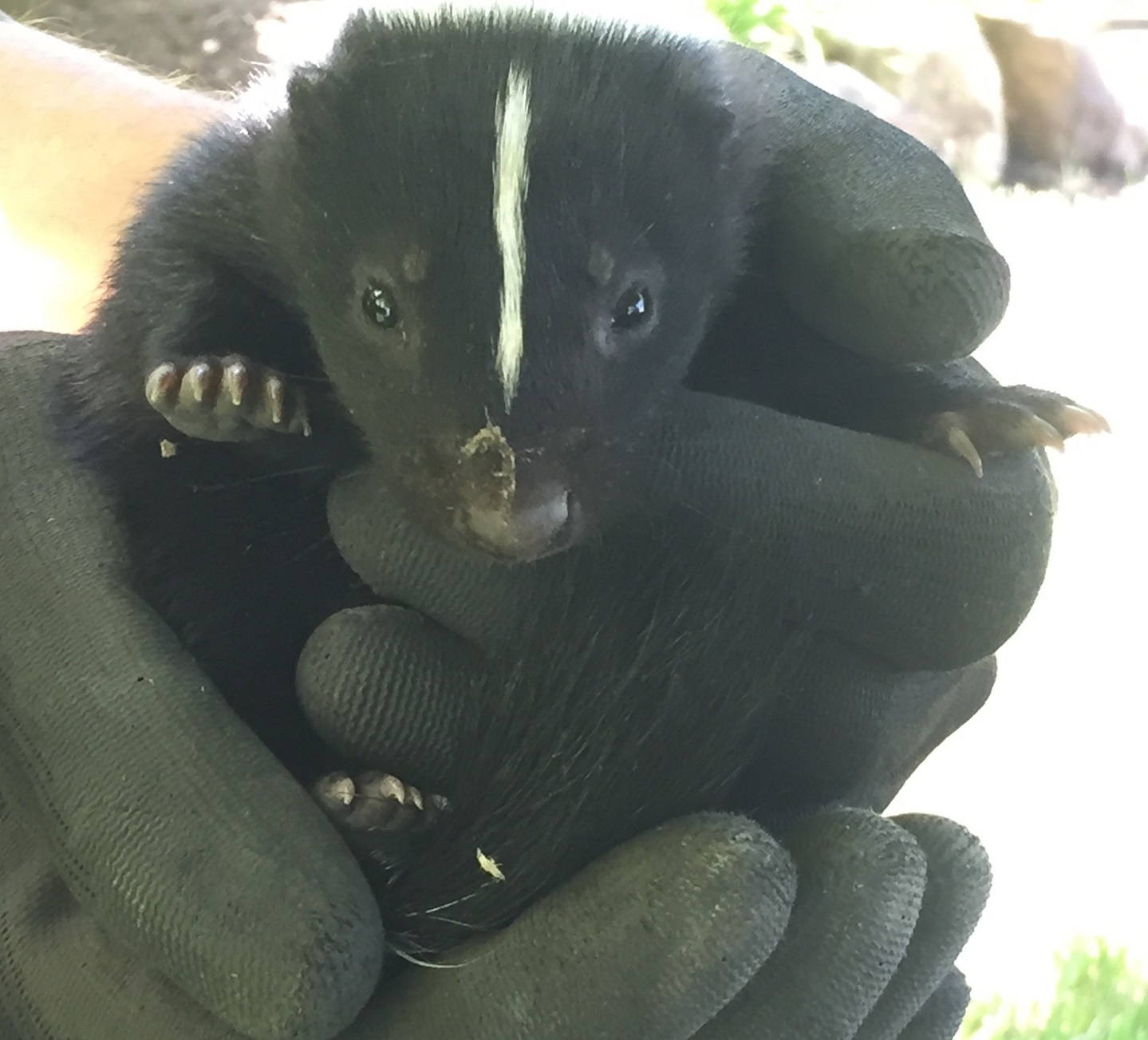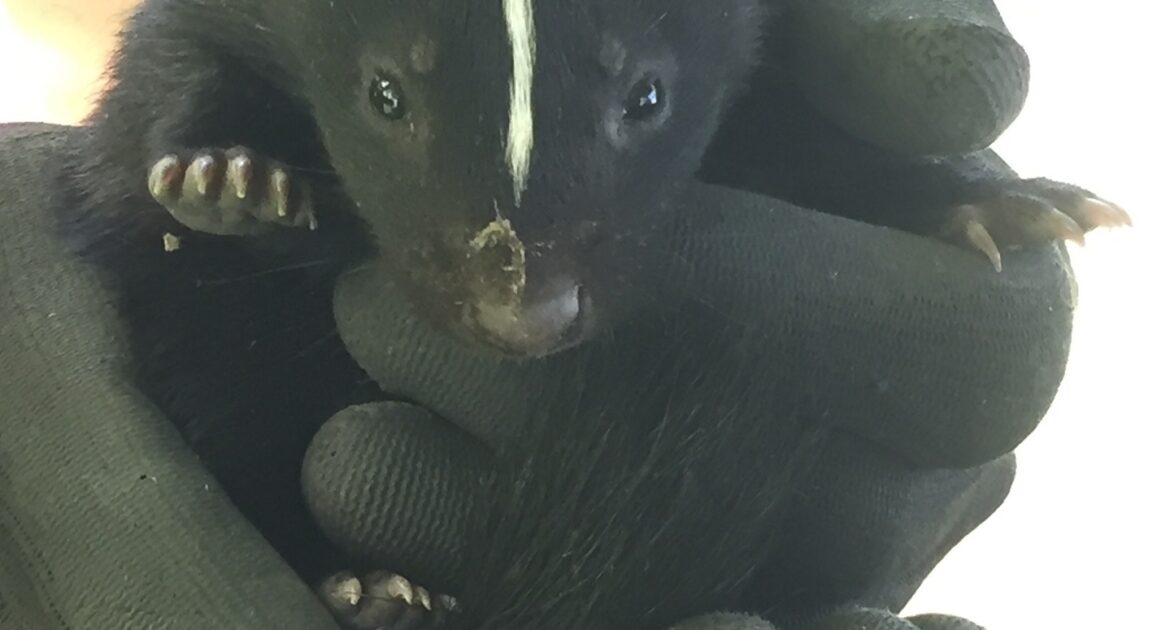The spray of offensive smelling fluid being the most recognized feature about them, skunks have been relegated to the lower ranks of acceptable wildlife animals to engage. But skunks are so much more than their stinky spray. Maybe if we took some time to understand the life of a skunk we’d be more appreciative of them and more likely to do the right and humane thing when they trigger the need for skunk prevention to prevent them from invading our Pickering properties.
Mating Season for Skunks

Skunks get amorous during the cold February climate. As they huddle together in their dens (under sheds, porches, buildings, woodpiles or in holes), their instinctive impulses tell them it’s time to start mating. Male skunks are so driven by the desire to mate that they’ll travel distances as far as five miles to find a female skunk. And no, the harsh cold of the winter does nothing to deter them. When a skunk identifies his female mate, he will aggressively defend his right to mate with her, even if this means spraying a competing male with his spray. Mating activities continue through to April each year.
Interestingly, the female of the striped skunk is unique in that she must be aroused in order to ovulate. Additionally, mating between skunks can appear to be quite violent especially as the stimulation required for the striped skunk includes some very intense actions. Violence between mating skunks occurs when the female is unwilling to mate. In this situation, she will retaliate and if necessary spray the male. A female skunk may be unwilling to mate for a number of reasons. One of these is simply timing. Young female skunks, for example, will hold off on mating until March or April before they participate in mating activities. Female skunks are the poster images of single mothers in the animal world. Male skunks abandon the female after mating and play no part in the gestation and nurturing phase of reproduction. It is no wonder some female skunks aggressively resist mating!
The Life of a Baby Skunk
The typical gestation period for skunks is 60-75 days. As a result, kits are usually born from May to June. They are prolific reproducers with up to 15 kittens being born in each litter. By 8 days of age, the kittens can secrete the stinky fluid through their anal regions. By the time they get a month in age, they are capable of defending themselves.
Adult Skunks
A skunk can dispatch its spray up to 15 feet away from where it stands… and with excellent precision. But they won’t spray until they feel threatened and they show signs prior to spraying (such as hissing, squealing, stomping one hind foot rapidly and raising its tail). Skunk spray is more than just an assault on the nose. If you are the unfortunate victim of a spray attack your eyes will also burn as well as temporary blindness and vomiting. A skunk’s life may seem relatively safe since most other members of the animal kingdom, including human beings, tend to leave them alone for fear of ending up on the wrong side of their spray, but they do have to remain alert for predators. Among those predators are large birds such as The Great Horned Owl that seem to not mind the stench of a skunk.
Humane Skunk Prevention by the Experts
If skunks wind up in your space, chances are they are simply trying to survive. They prefer to be away from human beings and so when they venture beneath your deck or shed they have usually run out of options in the wild. To avoid being attacked by skunk spray and to ensure that the skunks do not suffer during the removal process, you should opt for humane skunk removal and prevention when your Pickering property is invaded by the animals. Skedaddle has the perfect team for these situations. Your Skedaddle technician will arrive at your Pickering home equipped and ready to assess
the situation and remove the skunks humanely, clean and clear the debris left behind by the animals and install solutions to prevent re-entry.





